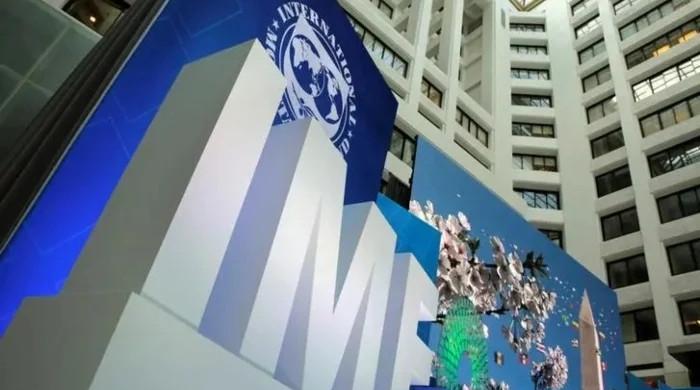Beware of AI-generated propaganda amid political unrest
The image shared online is enough to hurt the sentiments of Khan’s fans leading them to react. However, on closer inspection
May 11, 2023

An image of PTI Chairman Imran Khan is making rounds on social media. The image is allegedly of Khan sitting in jail. Wearing a white shalwar kameez and barefoot, he is seen sitting on an orange bench against a white wall.
The image shared online is enough to hurt the sentiments of Khan’s fans leading them to react. However, on closer inspection, it becomes clear the image has been tampered with — there are several points that reveal this.
The first clue is Khan’s shadow on the wall — it does not fall naturally especially if the light source is overhead. The person in the photo could pass as a wax statue of Khan, as the texture and colour of his skin seem unnatural, as do his eyes and nose. His eyes seem flat and without any emotion. They don’t reflect life and seem to be out of a bad one-dimensional painting.
And the last thing, which may not be as important, is that Khan looks younger in this image, which means this is not a recent image. Debunking that it is Khan in jail.
Fortunately, this image has not yet caused any backlash and has not gone viral probably because many social media sites and the internet are shut down in different areas.
But an Indian fact-checking website BOOM FactCheck fact-checked the image and concluded that it was an ‘AI Image Showing Imran Khan in Jail’ first shared by Aaj Tak, Aaj Tak Bangla.
However, if this image or any other image becomes viral at this critical point as emotions run high, things could become worse if that is possible.
The level of violence seen after Khan’s arrest has revealed the volatile nature of the young PTI worker can increase manifold if AI-generated content is deliberately shared to spread mis- or disinformation.
It would be viral before it could be pulled down from cyberspace and lead to more damage in the real world.
If someone is using AI for provocation, the same technology can be used to generate fake content to spread malinformation with the intent of causing harm or stirring trouble. If this happened, it will be very difficult to stop or verify it on time.
AI has pros and cons and is an exceptional tool that has revolutionised many industries and businesses, especially the media and journalism. Many people have been using AI in different ways in their daily lives. In cell phones as image recognition for face unlock; ChatGPT; and many popular virtual assistants like Siri, Alexa, and Google Assistant. Therefore, there is no surprise that AI will be part of different aspects of our daily lives.
As exciting as this technological advancement is, it is also quite concerning as it is fast becoming user-friendly — anyone can use it for whatever reason they chose.
Jürgen Schmidhuber, a German computer scientist who is now director of the King Abdullah University of Science and Technology’s AI initiative in Saudi Arabia, was once described as the father of artificial intelligence.
Schmidhuber said, “AI will progress to the point where it surpasses human intelligence and will pay no attention to people.” He also added that said it should not be feared.
An interesting concept that will, if it has not already, become a reality soon. However, this may not be good news for journalists who are not only inundated with information but must compete with non-journalist content creators who are treading on their turf. Now journalists will have to learn to verify and debunk more content in a shorter time, and then push it out to counter the false information spread across cyberspace.
This can become quite difficult when deadlines are short as the situation changes and violence erupts. Such a situation is good for easily spreading disinformation and misinformation faster and with more outreach to people who will believe in the chaos.
It is not too late for journalists and media houses to learn skills to tackle AI-generated mis-, dis-, and mal-information and to verify images, audio, and video which are becoming more and more lifelike.
It is not too late to start.
Disclaimer: The viewpoints expressed in this piece are the writer's own and don't necessarily reflect Geo.tv's editorial policy.









